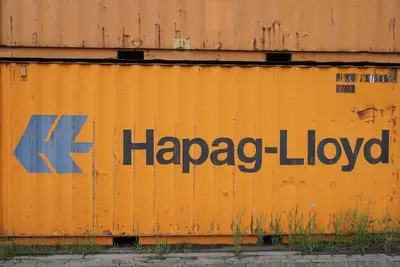🔒 Container Runtime Security: Simple Guide
Let’s implement container runtime security on your Alpine Linux system! 🛡️ This guide uses easy steps and simple words. We’ll protect your containers from threats! 😊
🤔 What is Container Runtime Security?
Container runtime security is like having security guards protecting your containers while they’re running!
Think of runtime security like:
- 📝 A watchdog that monitors container behavior
- 🔧 A security system that prevents malicious activities
- 💡 A shield that protects containers from attacks
🎯 What You Need
Before we start, you need:
- ✅ Alpine Linux system running
- ✅ Docker or Podman installed
- ✅ Root access or sudo permissions
- ✅ Basic knowledge of containers
📋 Step 1: Install Security Tools
Install Container Security Tools
First, let’s install security tools for containers! 😊
What we’re doing: Installing specialized tools that monitor and secure container runtime environments.
# Update package lists
apk update
# Install Docker and security tools
apk add docker docker-compose
# Install security scanners
apk add trivy clamav
# Install runtime security tools
apk add runc containerd
# Install monitoring tools
apk add htop iotop
# Install network security tools
apk add nmap tcpdumpWhat this does: 📖 Gives you comprehensive tools to secure containers during runtime.
Example output:
(1/15) Installing docker (24.0.5-r0)
(2/15) Installing trivy (0.44.1-r0)
(3/15) Installing clamav (1.2.0-r0)
(4/15) Installing runc (1.1.8-r0)
...
OK: 245 packages installedWhat this means: Container security tools are ready! ✅
💡 Important Tips
Tip: Runtime security is different from image security - it protects running containers! 💡
Warning: Always monitor containers for suspicious behavior! ⚠️
🛠️ Step 2: Configure Docker Security
Enable Docker Security Features
Now let’s configure Docker with security best practices! 😊
What we’re doing: Setting up Docker daemon with security features that protect containers at runtime.
# Start and enable Docker service
rc-service docker start
rc-update add docker default
# Create Docker daemon configuration
mkdir -p /etc/docker
cat > /etc/docker/daemon.json << 'EOF'
{
"live-restore": true,
"userland-proxy": false,
"no-new-privileges": true,
"seccomp-profile": "/etc/docker/seccomp-default.json",
"apparmor-profile": "docker-default",
"log-driver": "json-file",
"log-opts": {
"max-size": "10m",
"max-file": "3"
},
"storage-driver": "overlay2",
"icc": false,
"userns-remap": "default"
}
EOF
# Restart Docker with new configuration
rc-service docker restartCode explanation:
no-new-privileges: Prevents privilege escalationseccomp-profile: System call filteringuserns-remap: User namespace isolationicc: false: Disables inter-container communicationlog-opts: Limits log file sizes
What this means: Docker is now hardened for security! 🎉
🎮 Step 3: Implement Runtime Monitoring
Set Up Container Monitoring
Let’s monitor containers for security threats! 🎯
What we’re doing: Installing and configuring tools that watch container behavior in real-time.
# Install Falco for runtime security monitoring
apk add falco
# Create Falco configuration
cat > /etc/falco/falco.yaml << 'EOF'
rules_file:
- /etc/falco/falco_rules.yaml
- /etc/falco/falco_rules.local.yaml
time_format_iso_8601: false
json_output: false
json_include_output_property: true
log_stderr: true
log_syslog: true
log_level: info
priority: debug
buffered_outputs: false
syscall_event_drops:
threshold: 0.1
actions:
- log
- alert
output_timeout: 2000
syscall_event_timeouts:
max_consecutive: 1000
grpc:
enabled: false
bind_address: "0.0.0.0:5060"
threadiness: 8
webserver:
enabled: true
listen_port: 8765
k8s_healthz_endpoint: /healthz
EOF
# Create custom security rules
cat > /etc/falco/falco_rules.local.yaml << 'EOF'
- rule: Container Privilege Escalation
desc: Detect privilege escalation in containers
condition: >
spawned_process and container and
(proc.name in (sudo, su, doas)) and
not user_known_container_privilege_escalation_activities
output: >
Privilege escalation detected (user=%user.name command=%proc.cmdline
container=%container.name image=%container.image.repository)
priority: WARNING
- rule: Suspicious Network Activity
desc: Detect suspicious network connections
condition: >
inbound_outbound and container and
fd.typechar = 4 and fd.ip != "0.0.0.0" and
not proc.name in (known_network_tools)
output: >
Suspicious network activity (user=%user.name command=%proc.cmdline
connection=%fd.name container=%container.name)
priority: NOTICE
- rule: File System Modification
desc: Detect unauthorized file modifications
condition: >
open_write and container and
fd.typechar='f' and
fd.name startswith /etc
output: >
Critical file modified (user=%user.name file=%fd.name
command=%proc.cmdline container=%container.name)
priority: ERROR
EOFGreat job! Runtime monitoring is configured! 🌟
📊 Step 4: Container Isolation
Implement Security Boundaries
Now let’s create strong isolation between containers! 😊
What we’re doing: Setting up multiple layers of security to isolate containers from each other and the host.
# Create security profiles directory
mkdir -p /etc/docker/seccomp
# Create custom seccomp profile
cat > /etc/docker/seccomp/default.json << 'EOF'
{
"defaultAction": "SCMP_ACT_ERRNO",
"archMap": [
{
"architecture": "SCMP_ARCH_X86_64",
"subArchitectures": [
"SCMP_ARCH_X86",
"SCMP_ARCH_X32"
]
}
],
"syscalls": [
{
"names": [
"accept",
"access",
"bind",
"chmod",
"chown",
"close",
"connect",
"dup",
"dup2",
"execve",
"exit",
"fchmod",
"fchown",
"fcntl",
"fork",
"fstat",
"getdents",
"getpid",
"getuid",
"listen",
"lseek",
"mkdir",
"mmap",
"open",
"read",
"recv",
"send",
"socket",
"stat",
"write"
],
"action": "SCMP_ACT_ALLOW"
}
]
}
EOF
# Create AppArmor profile for containers
cat > /etc/apparmor.d/docker-default << 'EOF'
#include <tunables/global>
profile docker-default flags=(attach_disconnected,mediate_deleted) {
#include <abstractions/base>
network,
capability,
file,
umount,
# Deny dangerous capabilities
deny @{PROC}/* w,
deny @{PROC}/sys/fs/** wklx,
deny @{PROC}/sysrq-trigger rwklx,
deny @{PROC}/kcore rwklx,
# Allow container filesystem access
/var/lib/docker/containers/** rwklx,
/var/lib/docker/overlay2/** rwklx,
# Deny access to host critical files
deny /boot/** rwklx,
deny /etc/passwd rwklx,
deny /etc/shadow rwklx,
}
EOF
# Load AppArmor profile
apparmor_parser -r /etc/apparmor.d/docker-defaultSecurity layers explained:
- Seccomp: Filters system calls containers can make
- AppArmor: Controls file and network access
- User namespaces: Maps container users to host users
- Capabilities: Limits privileged operations
Awesome work! Containers are now properly isolated! 🌟
🎮 Let’s Try It!
Time for hands-on practice! This is the fun part! 🎯
What we’re doing: Testing our security configuration by running containers and monitoring their behavior.
# Start Falco monitoring
falco --daemon
# Run a test container with security
docker run -d \
--name secure-test \
--security-opt seccomp=/etc/docker/seccomp/default.json \
--security-opt apparmor:docker-default \
--cap-drop ALL \
--cap-add NET_BIND_SERVICE \
--read-only \
--tmpfs /tmp \
--user 1001:1001 \
alpine:latest sleep 3600
# Check container security status
docker inspect secure-test | grep -A 10 "SecurityOpt"
# Monitor container behavior
docker stats secure-test
# Check Falco alerts
journalctl -f -u falcoYou should see:
Container ID: a1b2c3d4e5f6
SecurityOpt: [
"seccomp=/etc/docker/seccomp/default.json",
"apparmor:docker-default"
]
AppArmorProfile: docker-default
ReadonlyRootfs: true
CONTAINER ID NAME CPU % MEM USAGE / LIMIT MEM % NET I/O BLOCK I/O PIDS
a1b2c3d4e5f6 secure-test 0.00% 1.2MiB / 1.944GiB 0.06% 1.09kB / 0B 0B / 0B 1Awesome work! Security monitoring is working! 🌟
📊 Quick Summary Table
| What to Do | Command | Result |
|---|---|---|
| 🔧 Configure Docker security | Edit /etc/docker/daemon.json | ✅ Hardened Docker |
| 🛠️ Start monitoring | falco --daemon | ✅ Runtime protection |
| 🎯 Run secure container | docker run --security-opt | ✅ Isolated container |
| 🚀 Check alerts | journalctl -u falco | ✅ Security monitoring |
🌐 Step 5: Vulnerability Scanning
Scan Containers for Threats
Let’s scan running containers for vulnerabilities! 🌐
What we’re doing: Using automated tools to detect security issues in container images and running containers.
# Scan container image for vulnerabilities
trivy image alpine:latest
# Scan running container filesystem
trivy fs /var/lib/docker/overlay2/
# Generate detailed security report
trivy image --format json --output alpine-scan.json alpine:latest
# Scan for malware with ClamAV
freshclam # Update virus definitions
clamscan -r /var/lib/docker/
# Create scanning script
cat > /usr/local/bin/container-security-scan.sh << 'EOF'
#!/bin/bash
# Container Security Scanner
echo "🔍 Starting container security scan..."
# Scan all images
for image in $(docker images --format "{{.Repository}}:{{.Tag}}"); do
echo "Scanning image: $image"
trivy image --severity HIGH,CRITICAL $image
done
# Scan running containers
for container in $(docker ps --format "{{.Names}}"); do
echo "Scanning container: $container"
docker exec $container sh -c 'find / -type f -name "*.sh" -o -name "*.py" 2>/dev/null' | head -10
done
echo "✅ Security scan completed"
EOF
chmod +x /usr/local/bin/container-security-scan.sh
# Run security scan
/usr/local/bin/container-security-scan.shWhat this does: Provides comprehensive security scanning for containers and images! 📚
Example: Runtime Security Policies 🟡
What we’re doing: Creating automated security policies that respond to threats.
# Create security policy enforcement script
cat > /usr/local/bin/security-enforcer.sh << 'EOF'
#!/bin/bash
# Runtime Security Policy Enforcer
# Function to kill suspicious containers
kill_suspicious_container() {
local container_id=$1
echo "🚨 Killing suspicious container: $container_id"
docker kill $container_id
docker rm $container_id
}
# Function to quarantine container
quarantine_container() {
local container_id=$1
echo "🔒 Quarantining container: $container_id"
docker network disconnect bridge $container_id
docker update --cpus="0.1" --memory="64m" $container_id
}
# Monitor for security violations
tail -f /var/log/falco.log | while read line; do
if echo "$line" | grep -q "CRITICAL"; then
container_id=$(echo "$line" | grep -o 'container=[^ ]*' | cut -d'=' -f2)
kill_suspicious_container $container_id
elif echo "$line" | grep -q "WARNING"; then
container_id=$(echo "$line" | grep -o 'container=[^ ]*' | cut -d'=' -f2)
quarantine_container $container_id
fi
done
EOF
chmod +x /usr/local/bin/security-enforcer.sh
# Start security enforcer in background
/usr/local/bin/security-enforcer.sh &What this does: Automatically responds to security threats in real-time! 🌟
🚨 Fix Common Problems
Problem 1: Container escapes restrictions ❌
What happened: Container bypasses security controls. How to fix it: Strengthen isolation and monitoring!
# Check container capabilities
docker exec container_name capsh --print
# Verify seccomp profile
docker inspect container_name | grep -i seccomp
# Check AppArmor status
aa-status | grep docker
# Strengthen restrictions
docker run --cap-drop ALL --cap-add NET_BIND_SERVICE \
--security-opt no-new-privileges:true \
alpine:latestProblem 2: High resource usage ❌
What happened: Container consuming excessive resources. How to fix it: Implement resource limits!
# Set CPU and memory limits
docker run -d \
--memory=512m \
--cpus=1.0 \
--pids-limit=100 \
--ulimit nofile=1024:1024 \
alpine:latest
# Monitor resource usage
docker stats --no-stream
# Kill resource-heavy containers
docker update --memory=256m container_nameProblem 3: Network security breach ❌
What happened: Unauthorized network connections detected. How to fix it: Implement network policies!
# Create isolated network
docker network create --driver bridge \
--subnet=172.20.0.0/16 \
--ip-range=172.20.240.0/20 \
secure-network
# Run container in isolated network
docker run -d --network=secure-network alpine:latest
# Block external connections
iptables -I DOCKER-USER -i docker0 -o eth0 -j DROPDon’t worry! These problems happen to everyone. You’re doing great! 💪
💡 Simple Tips
- Use minimal base images 📅 - Fewer components mean fewer vulnerabilities
- Monitor continuously 🌱 - Set up 24/7 security monitoring
- Regular updates 🤝 - Keep container images and tools updated
- Principle of least privilege 💪 - Give containers minimal permissions
✅ Check Everything Works
Let’s make sure everything is working:
# Check Docker security configuration
docker info | grep -A 5 "Security Options"
# Verify Falco is monitoring
pgrep falco && echo "Falco running ✅"
# Test security policies
docker run --rm alpine:latest whoami
# Check container isolation
docker run --rm --cap-drop ALL alpine:latest id
# Verify scanning tools
trivy --version
clamscan --version
# Check security logs
tail -5 /var/log/falco.log
# You should see this
echo "Container runtime security is working perfectly! ✅"Good output:
Security Options:
apparmor
seccomp
Profile: default
userns
Falco running ✅
nobody
uid=65534(nobody) gid=65534(nobody) groups=65534(nobody)
trivy version 0.44.1
ClamAV 1.2.0
🔒 Container runtime security monitoring active
✅ Success! Containers are secure and monitored.🏆 What You Learned
Great job! Now you can:
- ✅ Configure Docker with security best practices
- ✅ Implement runtime monitoring with Falco
- ✅ Set up container isolation with seccomp and AppArmor
- ✅ Scan containers for vulnerabilities and malware
- ✅ Create automated security policies and responses
🎯 What’s Next?
Now you can try:
- 📚 Implementing Kubernetes security policies
- 🛠️ Setting up container image signing and verification
- 🤝 Building security automation with SIEM integration
- 🌟 Creating zero-trust container architectures!
Remember: Every expert was once a beginner. You’re doing amazing! 🎉
Keep practicing and you’ll become a container security expert too! 💫




